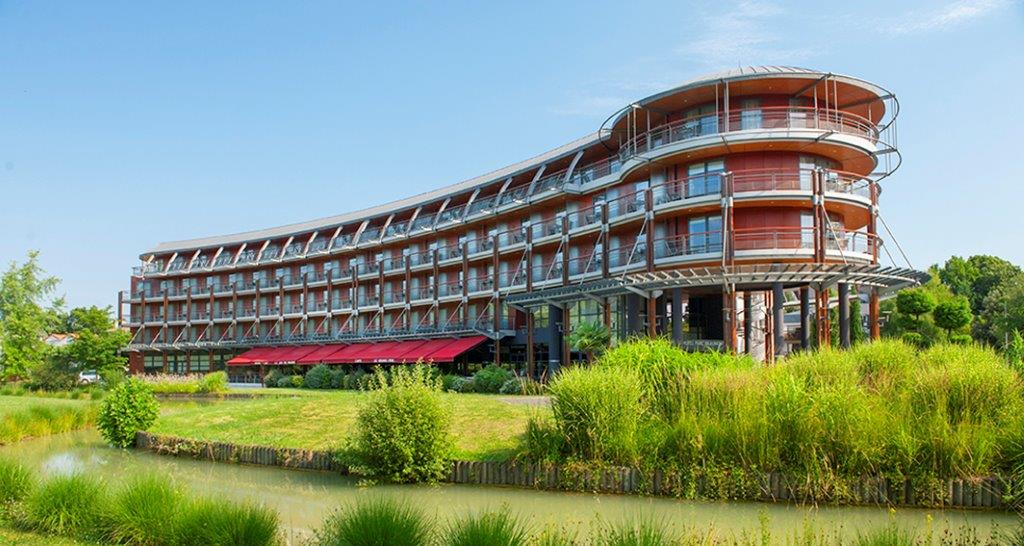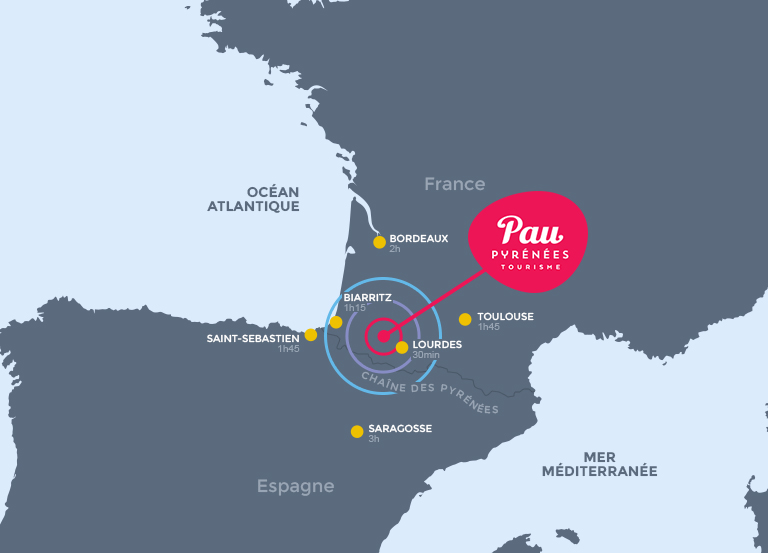Practical information
Target audience
The school primarily targets doctoral students (international & national) with an interest in (geo-)mechanics or digital rock physics. Other professionals from research centers, universities and industry, showing interest in the potential of 3D imaging techniques in application domains involving solid porous media and transport therein, are welcomed as well.
Accommodation

Accommodation is included in the school fee! Participants will stay in a 4-star hotel in the heart of the city of Pau, France. All rooms are air-conditioned and equipped with a TV-set. Access to the hotel's fitness room is included, as is the copious and tasty breakfast. Since only a limited number of single rooms is available, room sharing is encouraged. The registration form has an option to specify the name of someone you wish to share with. For single rooms a surcharge (240-290€, depending on the room type) has to be paid on-site. Most rooms are accessible by wheel-chair, yet please inform us via the registration form.
Venue

The welcome cocktail and the school lectures will take place at the 5-star Hotel Parc Beaumont. You'll benefit from all the advantages of a top-notch conference venue : a spacious and confortable lecture room, stable and functional wifi, catered breaks and buffet meals with drinks and coffee or tea included. The first meal is the welcome cocktail on the evening of Sunday September 1st with a splendid view on the Beaumont Parc, and the last meal is lunch on Friday September 6th. The school venue is a few 100m from the hotel accommodation and within a 5 minutes walk from town centre.
Location
Pau is the second largest city in Aquitaine, ideally placed in the heart of a territory at the confluence of France and Spain. Pau is at 30 km from the Pyrenees and about one hour from the Atlantic coast. The city center, along a rocky balcony at the southern end of the city, offers a unique panorama of the Pyrenees. The lower town is crossed by the Gave, a tributary of the River Adour, which constitutes a remarkable wet natural environment. This exceptional environment, as well as the micro-climate that prevails, have made Pau a climatic station very popular with the Anglo-Saxon bourgeoisie since the end of the 19th century. Pau is today classified tourist resort and enjoys the label "City of Art and History". More info on www.pau-pyrenees.com (in french).
Getting there

By plane
Pau airport is located at only 11 km from Pau (about 20-25 min by taxi or shuttle). It offers 9 daily connections with Paris and 3 with Lyon, and from these airports you can get connecting flights to anywhere on the globe. More info on www.pau.aeroport.fr/passenger.
To reach the city center, you can either take bus line P20 or take a taxi. The bus runs hourly from about 7:30am to 7:30pm and costs about 1.2€ for a single trip. The bus stop "Bosquet" is pretty central. For up-to-date info on travel times and prices, check out www.reseau-idelis.com. A trip by taxi will cost you around 25-30€.
By train
The Pau train staion is the 3rd station of Aquitaine with more than one million passengers. Four TGVs connect Paris daily. Check out en.oui.sncf
By car
Pau is about 200 km from Bordeaux and Toulouse, 250 km from Zaragoza (Spain), about an hour from the ski resorts and the Atlantic coast.
Carpooling is popular in France. Check out www.blablacar.fr.
Contact
The ISS2019 organizers are available to answer any questions about the programme.


